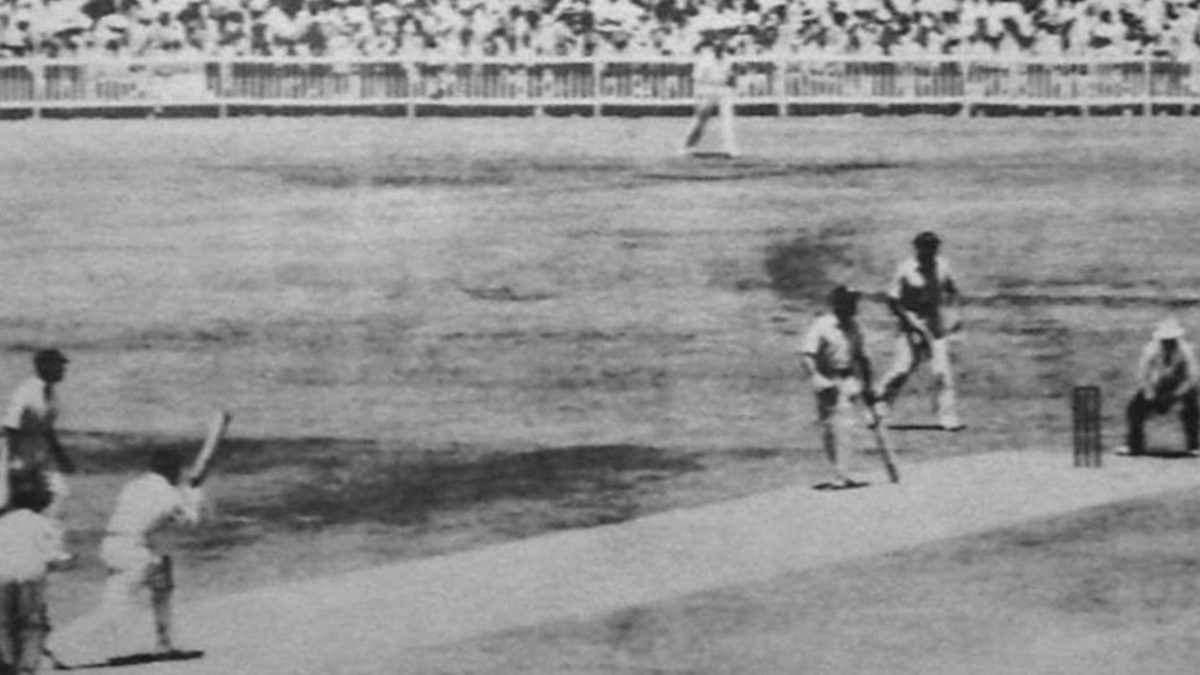
Brian Taber died on July 21, 2023, aged 83. He had 60 dismissals (including eight on debut) and 353 runs from 16 Test matches, and was remembered in the 2024 Wisden Almanack.
TABER, HEDLEY BRIAN, died on July 21, aged 83. Perhaps the best wicketkeeper ever produced by New South Wales – he edged out Bert Oldfield in their official team of the 20th century – Brian Taber was a quiet, reassuring presence behind the stumps. He claimed eight dismissals on Test debut at Johannesburg in 1966/67, and two years later equalled the first-class record at the time with 12 for NSW against South Australia at Adelaide. That included stumping Greg Chappell in both innings off leg-spinner Dick Guy, a team-mate at the Gordon club in Sydney. “Tabsy was from another era,” thought Greg’s brother Ian, “when they picked keepers for their glovework, and then worried about the batting.”
Born in Wagga Wagga, Taber was given the name Hedley by his cricket-loving father as a tribute to the England slow left-armer Verity. He soon showed an aptitude for sports – football as well as cricket – despite chronic asthma, which remained a lifelong problem. After moving to Sydney, Taber made his NSW debut in 1964/65, taking a shoulder-high catch off Dave Renneberg from the fourth ball of the match against Western Australia, and was soon turning heads with his smooth technique. His second season produced 35 dismissals, with 12 stumpings. When Wally Grout finally retired as Australia’s keeper after the 1965/66 Ashes, his long-time deputy Barry Jarman was expected to take over – but Jarman’s wife was suffering from cancer shortly before the 1966/67 tour of South Africa, so Taber went instead.
He finished his maiden series with 20 dismissals, but a highest score of 30 was more of a concern. Taber hit the only first-class century of his career early the following season – 109 at Adelaide – but Jarman returned for the home Tests and the 1968 Ashes tour. Taber travelled to England as his deputy, though many thought he should have been first choice, as Jarman, a big man, was showing signs of sluggishness; Taber did play in the third Test at Edgbaston, after Jarman broke a finger at Lord’s. Calls for change increased when West Indies toured in 1968/69: in the First Test, Jarman dropped three catches and made a duck. The axe finally fell after the fourth match, and Taber – in his prime at 28 – was expected to have a long tenure behind the stumps.
He took six catches in the final Test at Sydney, prompting Phil Wilkins to write in The Sydney Morning Herald that “Taber’s performance confirmed he should have been in the Test team long ago” – but this proved his only cap at home. In 1969/70, an arduous tour of India was followed by four successive heavy defeats in South Africa. Don Bradman and his fellow selectors decided on a radical change: the Test wicketkeeper would need to score runs as well. “It seemed obvious that he was omitted on reports he hadn’t kept all that well in South Africa,” thought NSW team-mate Doug Walters. “If that was to be the guide for selection, I don’t think any of us would have got into the team, because the fielding over there was appalling, just too bad to be true.”
Rod Marsh came in for the 1970/71 Ashes – and stayed put for more than a decade. Taber toured England again in 1972, this time as Marsh’s wingman, and generously helped smooth the rough edges of his keeping. He retired after the 1973/74 season, became a sought-after coach, spent several years as an NSW selector, and played a lot of golf. He also looked after various age-group teams. In 1990, he managed a Young Australia side to the West Indies. Taber was cautioned that one of the players – Shane Warne – was a bit of a handful, and told to send him home if he put a foot out of place. “Tabsy quite rightly ignored the advice,” said Ian Chappell. “He made Warne the social secretary, and after the tour he told me: ‘By the way, the young bloke is a really good leg-spinner.’”
Chappell, a frequent Test team-mate, was an admirer. “Despite his prowess as a smooth keeper with good footwork, I worried about him after he was struck in the eye by a bail in a charity game,” he reminisced on ESPNcricinfo. “But in 1982 we took an old-timers’ team to play in Fiji. We had three wrist-spinners. When David Sincock, the biggest spinner of them all, hit the edge of the matting with his first delivery, it flew past the batter’s left shoulder. Taber collected the ball easily and casually tossed it to me at slip. The next ball hit the same spot on the matting and shot straight along the ground, just missing off stump. He again easily collected the ball and casually tossed it to me at slip. I stopped worrying about his damaged eyesight then.”
Follow Wisden for all updates, including live scores, match stats, quizzes and more. Stay up to date with the latest cricket news, player updates, team standings, match highlights, video analysis and live match odds.







